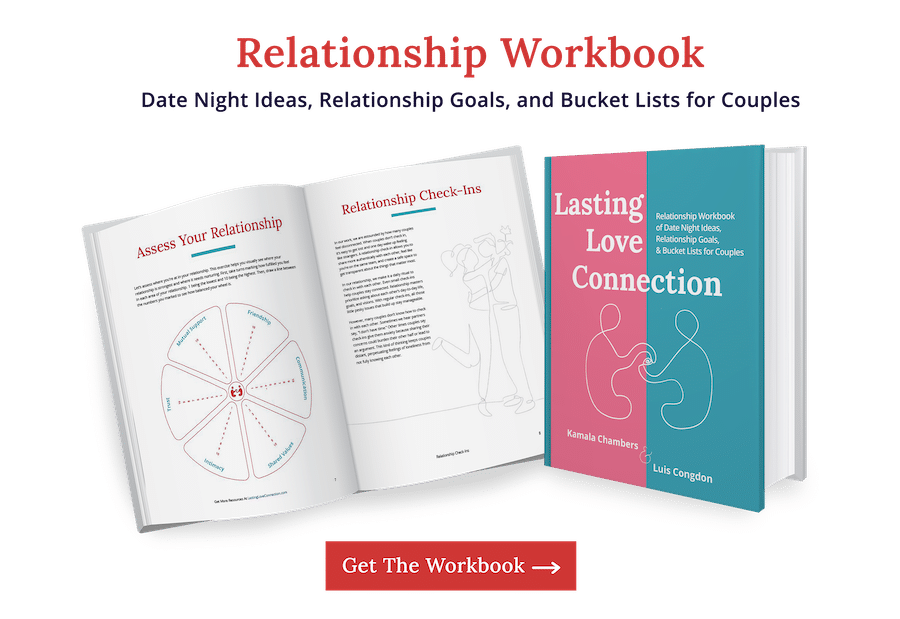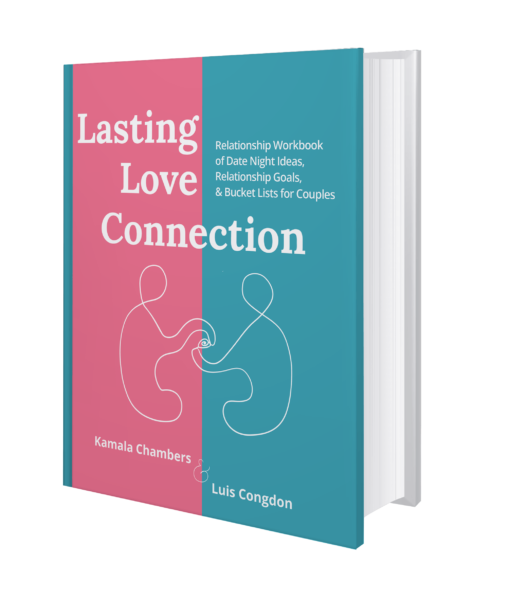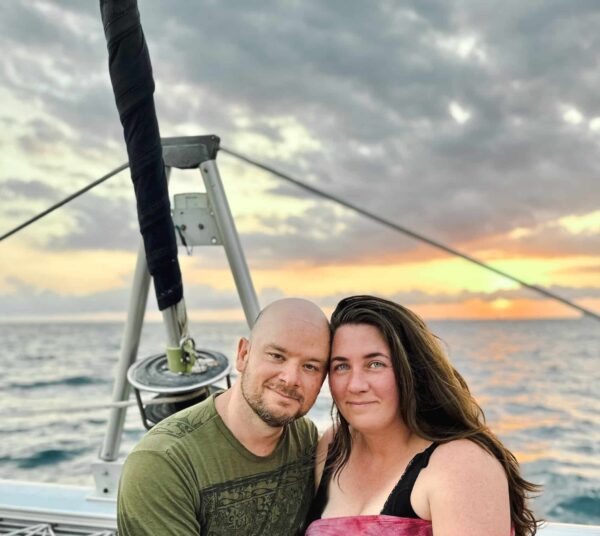Creating conscious relationships is an ever-evolving journey.
Perhaps you have come across this term before but are unsure what it means.
In this article, we’ll discuss conscious relationships and explore their unique qualities.
Also, we’ll give you strategies to create a conscious partnership and improve your relationship.
Table of Contents
What are conscious relationships?

A conscious relationship involves supporting each other’s growth.
In a conscious relationship, you and your partner will feel more alive, connected, and able to see your blind spots and conflicts as opportunities for growth.
You magnify each other’s strengths and improve each other’s weaknesses.
In a conscious relationship, you
- feel your feelings, thoughts, and behaviors with curious exploration.
- seek to understand your partner’s perspectives.
- communicate openly about your desires and needs.
- set healthy boundaries.
- remain aware of your emotional triggers and patterns.
- respond thoughtfully instead of reacting impulsively in conflict.
The difference between codependent and conscious relationships
In many modern relationships, couples choose to be together for the sake of personal growth and break out of the codependent model.
In codependent relationships, there is an imbalance of power. Couples overgive, take advantage of each other, and try to maximize their own needs.
For example, if you were in a codependent relationship, your partner may threaten to leave you as a way to manipulate or control the situation.
As a result, both of you stay unconscious and repeat a toxic pattern of control in your relationship.
In a conscious relationship, you and your partner work to identify patterns and see where both of you play a role.
You make agreements to create healthy changes together.
We call this co-creation as opposed to codependency.
A conscious relationship involves deep self-awareness
In a conscious relationship, couples become aware of their triggers and patterns and work on managing them together.
This does not necessarily mean that you will never have a difficult moment.
However, instead of re-enacting old patterns, you do the inner work to better understand your unconscious conditioning.
In a conscious relationship, you give each other room to explore your emotions and create space for curiosity and safe exploration.
Once you understand your emotions, you can work together to find a healthier solution.
When you have a higher level of self-awareness and are committed to growth and healing, it leads to better relationships.
5 essential qualities of a conscious partnership
Now, let’s look at 5 essential qualities of a conscious relationship.
Qualities of conscious relationships #1: Emotional intelligence

In a conscious partnership, you work together to enhance emotional intelligence.
Couples who want a healthy relationship deepen their emotional vocabulary to discuss their feelings and experiences.
According to a study by Dr. Brene Brown, most people can identify only three emotions while experiencing them: happiness, sadness, and anger.
With such a limited vocabulary to process feelings, it’s difficult to communicate your inner self fully.
For example, you notice what seems like anger rising in your body. Then, when you stop to examine it, you realize it’s actually resentment or overwhelm.
Expanding your emotional vocabulary gives you more language to talk about your feelings and what you need from your partner.
Developing emotional intelligence helps to increase your self-awareness.
Qualities of conscious relationships #2: Personal growth

A conscious couple values growth.
They recognize that we all have past wounds, hurts, and fears that arise in romantic relationships.
In a conscious relationship, you and your partner work together to prevent getting swept away by triggers.
Instead, you commit to identifying the root of your emotions and effectively communicating your internal experiences to each other.
In a conscious relationship, difficult moments are viewed as an opportunity for healing.
One of the most healing things about a conscious partnership is sharing your innermost thoughts and feelings with another person and allowing them to love and support you even in the places where you feel broken or wounded.
Qualities of conscious relationships #3: Radical responsibility

In a conscious relationship, both partners must take radical responsibility.
In their book Conscious Loving, Dr. Gay Hendricks and Kathlyn Hendricks explain that couples generally take one of two paths when they encounter conflicts.
Choice A: Telling the truth.
Choice B: Withholding, withdrawing, or projecting.
For instance, you find yourself having doubts about one area of your marriage.
Choice B would look like suppressing those doubts or letting them create distance between you and your partner.
Alternatively, you may find yourself projecting your insecurities onto your partner, even accusing them of not being fully committed when, in reality, it is you who is feeling uneasy.
On the other hand, choice A requires being honest with yourself and your partner about your doubts and feelings.
In a consciously loving relationship, both partners take responsibility for their role in the relationship dynamics.
Further, taking responsibility doesn’t just mean admitting when you do something wrong.
It also means taking a stand for your happiness.
Are you sacrificing your true desires in a relationship to avoid being seen as “too much”?
Do you suppress your needs to prevent any conflicts or the possibility of rejection?
In a conscious relationship, telling the truth is a conscious choice, even when it feels scary, and we can’t control the outcome.
Qualities of conscious relationships #4: Acceptance

As you and your partner support each other to become your best selves, it’s equally important that you accept each other.
Acceptance means acknowledging that your partner is not perfect.
Even though their flaws may be irritating sometimes, they are all part of the person you have chosen to love and share life’s adventures with.
In a conscious relationship, you accept that you can influence but not change your partner.
You acknowledge that your romantic partner is their own person and in charge of their own experiences and growth journey.
Qualities of conscious relationships #5: Presence

Presence is one of the most crucial qualities of a conscious relationship.
In today’s world, it’s common for couples to be distracted and not fully present with each other.
They may engage in activities like eating dinner together or sleeping in the same bed, but their minds are elsewhere.
In a consciously loving relationship, you’re tuned into the present moment.
You and your partner prioritize quality time together and fully engage during those moments.
When spending time with your partner, you avoid distractions like the TV or your phone.
Instead, you make a conscious effort to focus on the person in front of you and connect with them.
You take advantage and create opportunities to bond.
You show your partner how much you love and appreciate them.
In a long-term relationship, it’s easy to take your partner for granted.
Embracing the present moment keeps the passion in your relationship alive.
How do you create a conscious relationship?

Now, let’s explore some simple steps to start a conscious path toward a more fulfilling relationship.
Creating conscious relationships step #1: Identify an intention for your relationship
The first step in building a conscious relationship is establishing its purpose.
Start by discussing with your partner what you both want from the relationship.
What kind of life do you want to create together?
What does your ideal relationship look and feel like?
A clear sense of meaning and purpose allows you to build a relationship supporting your vision.
For a complete guide to creating couples goals, pick up the Lasting Love Connection Workbook.

Creating conscious relationships step #2: Make agreements

Create agreements that support your vision for an ideal relationship.
When you set agreements, the expectations are clear.
You have a clearer path to meeting each other’s needs and achieving your goals within the relationship.
Understand that agreements can change over time.
The Intimacy Deck is a great way to stay up to date with your partner’s feelings and expectations.
Creating conscious relationships step #3: Take action

Agreements mean nothing without action.
It’s not enough to have agreements; they must also shape how you act.
To cultivate conscious love, establish daily habits and behaviors that help your relationship thrive.
For example, if you want spiritual growth to be part of your lives, establish a weekly practice focusing on spiritual development. This practice may include discussing new ideas, meditation, or spending time in nature.
What a conscious relationship looks like?
A conscious relationship is characterized by self-awareness, emotional intelligence, mutual respect, taking responsibility together, and co-creation for the desired partnership. Key aspects of conscious love include honest communication, individual growth and support, shared values and goals, mindfulness, and presence.
What are the 4 pillars of a conscious relationship?
A conscious relationship involves self-awareness, honest communication, intimacy, and mindfulness. By cultivating these qualities, partners create a bond grounded in love and collective growth.
What is the difference between a conscious and unconscious relationship?
In an unconscious relationship, partners may not understand their emotions well, resulting in conflict and a power struggle. Conversely, conscious couples take responsibility for their emotions and reactions together. Instead of blaming their partner for doing something wrong, they process their feelings and work to manage their emotional responses as a couple.
How do you start a conscious relationship?
Building a conscious connection requires self-awareness. To begin the process, ask yourself what you desire from romantic love and what your ideal romantic relationship looks like. Next, have an open conversation with your partner to establish agreements that align with your shared vision for the relationship.
Take the next steps to create a more conscious relationship
If you want to create a conscious relationship, we suggest reading the book “Conscious Loving” by Dr. Gay Hendricks and Kathlyn Hendricks. In addition, we recommend working with a relationship coach who will help you apply these skills in your own relationship. A marriage coach will help you develop new relationship patterns and build the kind of relationship you desire. Book a complimentary couples consultation with us to learn more about relationship coaching.






0 Comments